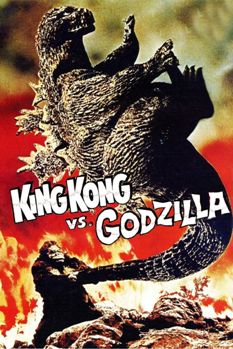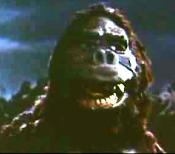The vampire women rise after their two century nap to claim the daughter (María Duval) of a local scientist (Augusto Benedico) as their next queen. It is up to Samson (Santo), the masked wrestler and part-time crime fighter, to defeat the evil females and their three bulky henchmen.
To truly understand the wonders of Samson vs. the Vampire Women, you need to be able to buy into the Mexican masked wrestler movement. Can you? Well, I sure as hell can’t. What was wrong with the entire country of Mexico? This had to be one of the dumbest entertainment forms in human history, and this is from someone whose society has embraced both Jerry Lewis and American Idol. For forty years, people cheered as pudgy men in stylized masks faked fights in rings, and then defeated monsters in movies. It’s like American pro-wrestling, only dumber, and here, it is just mentally deficient NASCAR fans who follow WWE. In Mexico, everyone loved it, until the ’70s when the government realized it made the country look stupid and stopped funding it. And that pretty much wrapped it up for Santo (The Saint), who was the king of the “sport” and made over fifty films.
In Samson vs. the Vampire Women, Santo has become Samson for the English dubbed version because… Because… Who knows? Perhaps the distributor wanted to trick people into thinking this was an Italian sword and sandal epic. But his name doesn’t matter. He’s his normal shirtless, mask and cape-wearing self. He stays in that outfit at all times, when in the office, at a party, and speaking to the local vampire expert and scientist over a two-way television. His main wrestling opponents are over-sized, vampire males who all wear sleeveless black shirts and Halloween capes. One of them turns into a werewolf for a match, a previously unstated ability which is ignored after the man with a furry mask transforms into a rubber bat on a string. Is it beginning to sound silly? It only gets sillier, and yet, it isn’t a bad time.
The wrestling fights are as pathetic as you might imagine, but the sight of Santo (I mean Samson), striding into the scientist’s study or driving around town in his spandex and glitter, will make even depressed viewers chuckle. We’re deep into that fabled so-bad-it’s-good land here, and I was laughing more than I do with a majority of comedies. The over-the-top dubbing adds to the goofiness and is the way to hear the film; this is a case where the original dialog will decrease the fun.
There is more here than just things to snicker at. Roughly half the movie takes place in the vampires’ castle and feels like a different director was at the helm. Someone did their homework on 1930s horror and has the atmosphere perfect for an homage to those early films. It’s all cobwebs and coffins and slowly moving stone blocks. The vampires are ugly enough by any standard, and then they drink blood and…wow. Revitalized, these are some hot undead babes. Tandra (Ofelia Montesco), priestess of the vamps, is a stunningly good looking woman who understands the purpose of cleavage. Her queen, Zorina (Lorena Velázquez), is equally gorgeous, but prefers to take poses that exhibit her legs. The segments that involve the two of them and their beguiling sisters could have been used in a real horror film, and a sexy one at that.
The story is too ludicrous to dwell on, as is the inability of the vampires to notice when the sun is rising (or to buy curtains). Trying to follow what’s going on will only make your head hurt. This is a film to laugh at, drool over, and drink a lot of beers with.
Samson vs. the Vampire Women was chosen as the sixth season finale for MST3K. It is a funny episode, but not due to the chatting. The film itself is more humorous than any comments Mike and the robots make about it.











